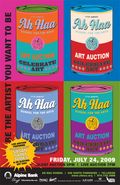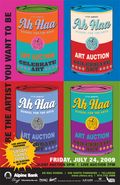Telluride Gallery of Fine Art: Uelsmann Images, #2
[click "Play" button for a discussion of one Uelsmann image] Telluride Gallery of Fine Art will host an exhibition of works by Jerry Uelsmann and Maggie Taylor from August 6 to September 6, 2009. The opening is Thursday, August 6, from 5:30-7:30 pm at the...







